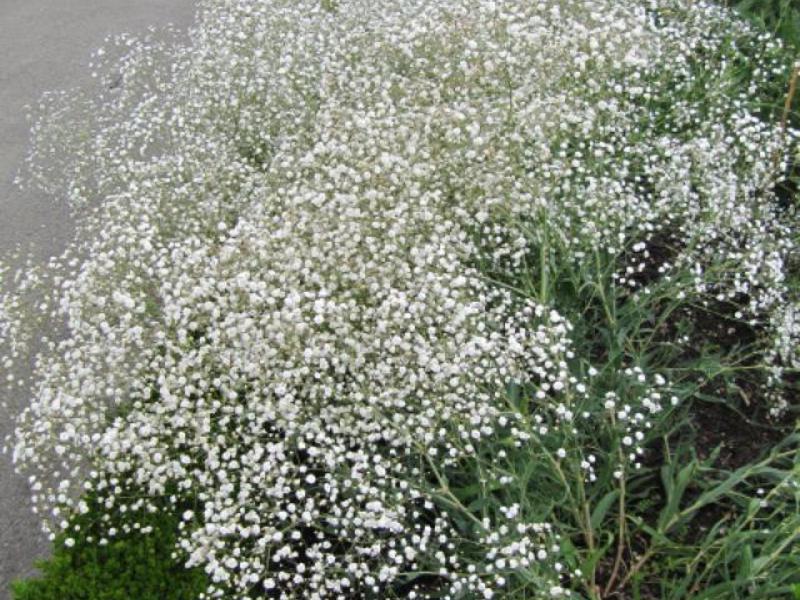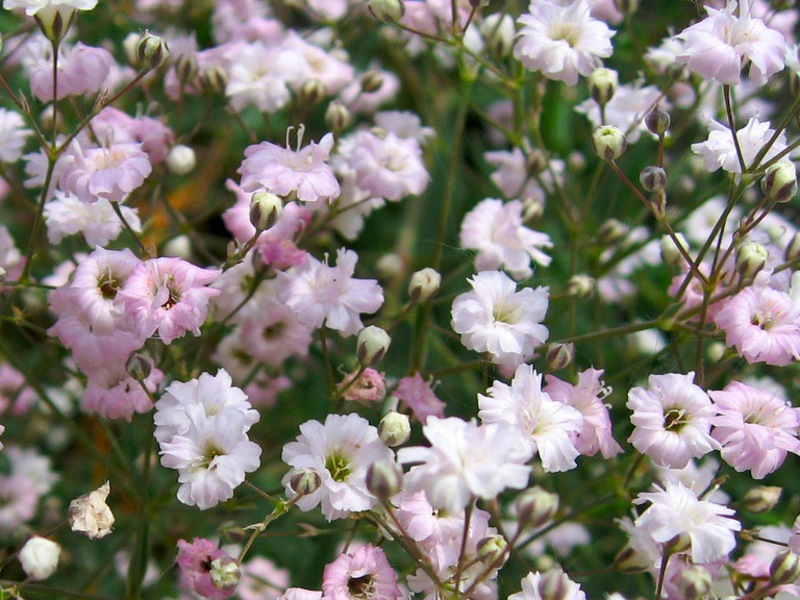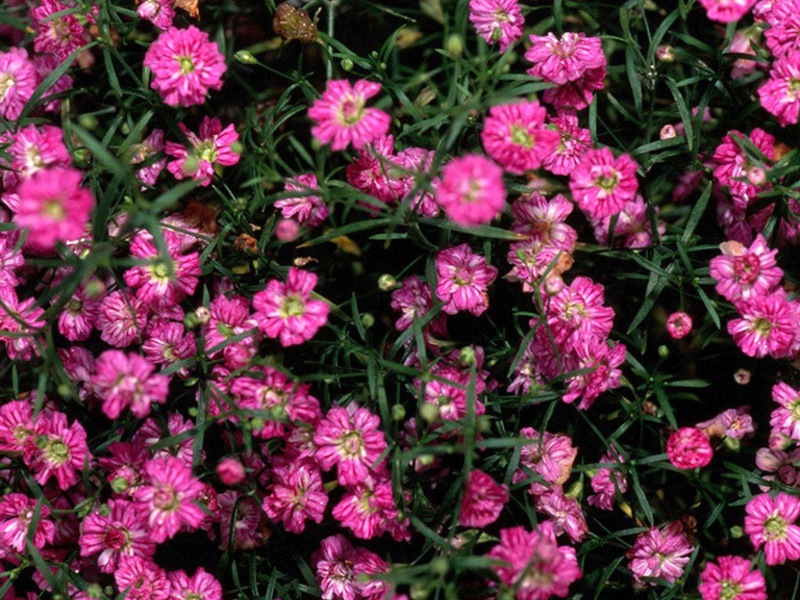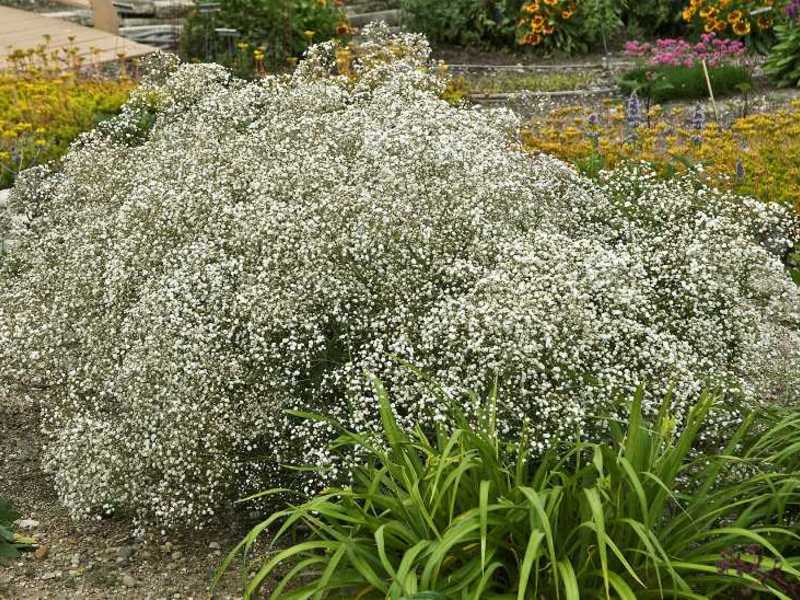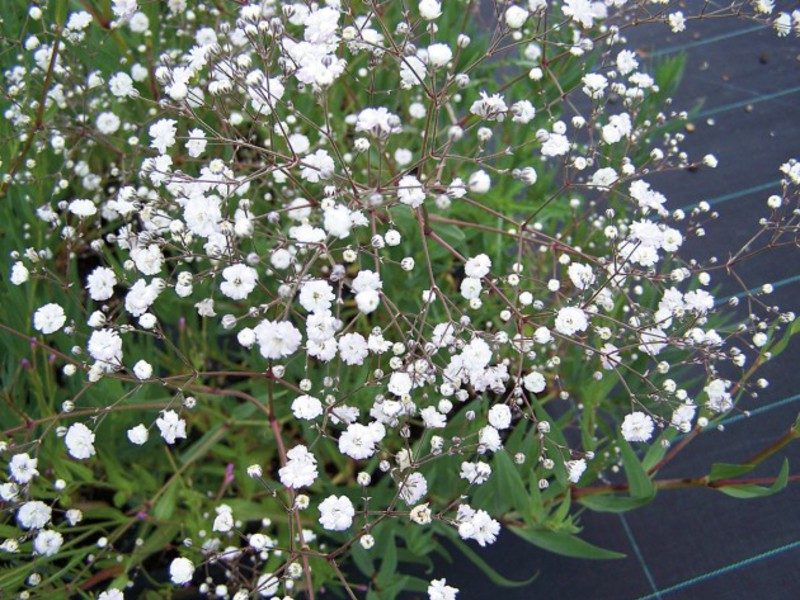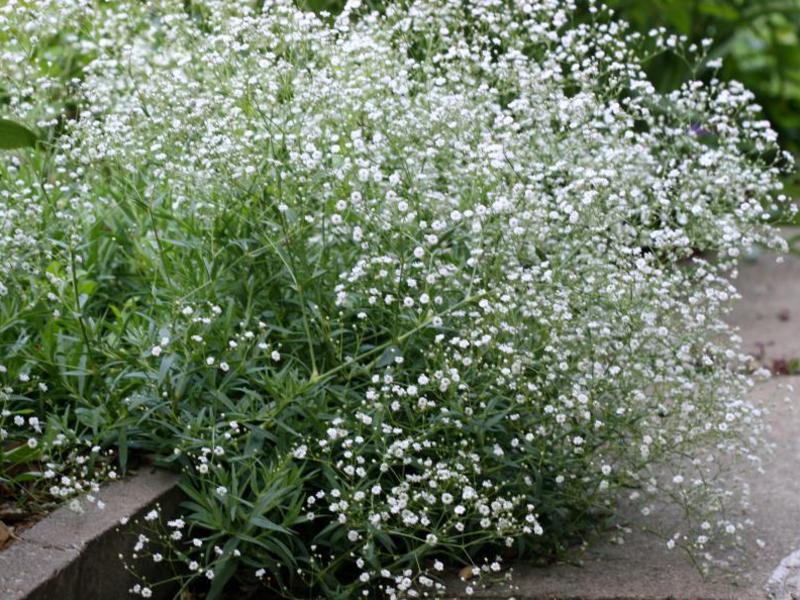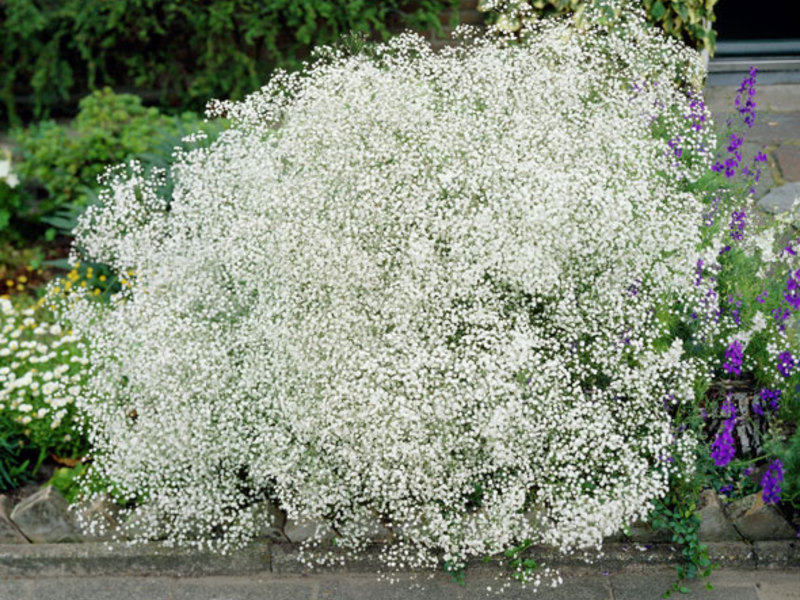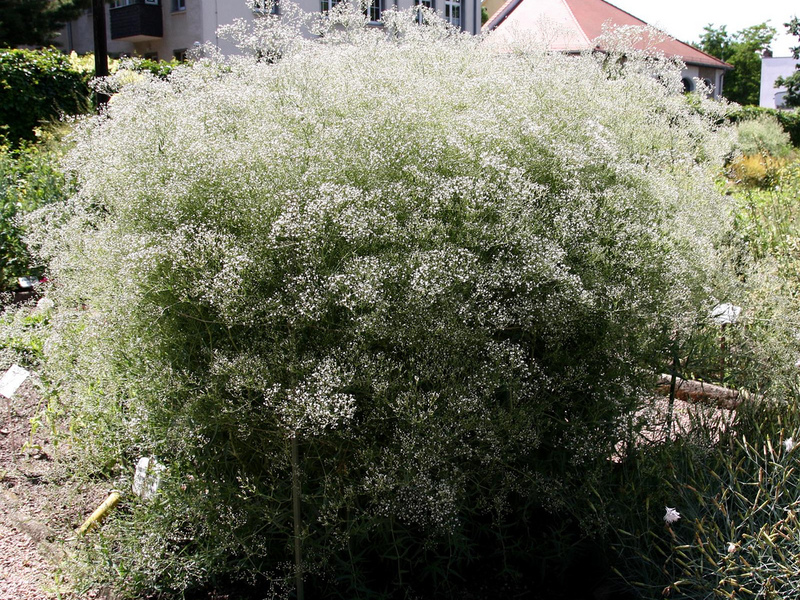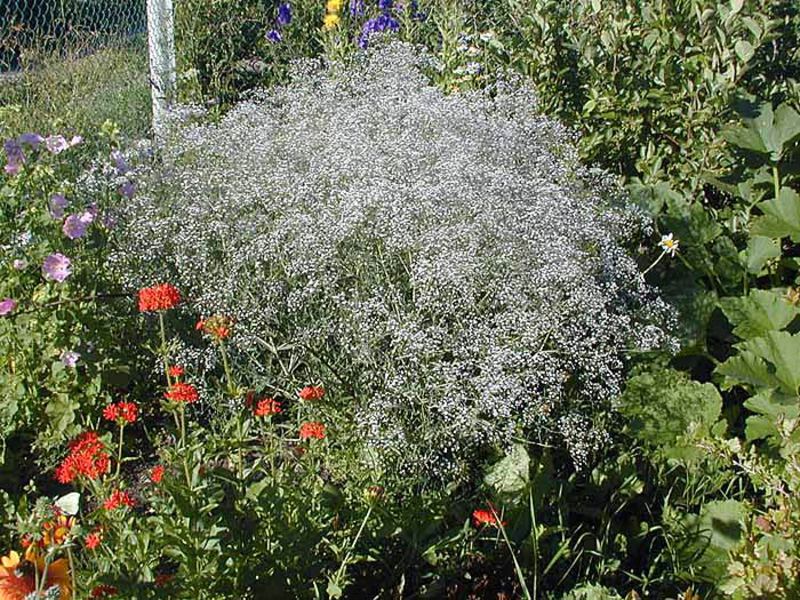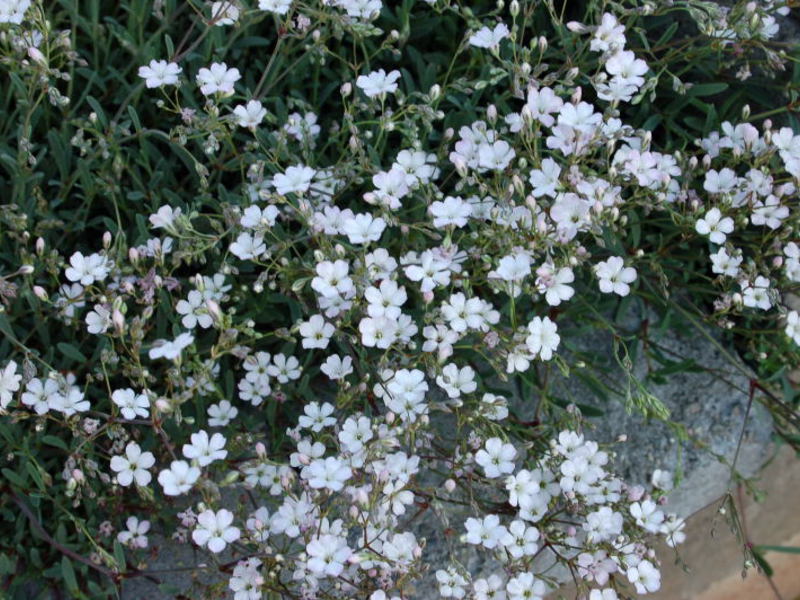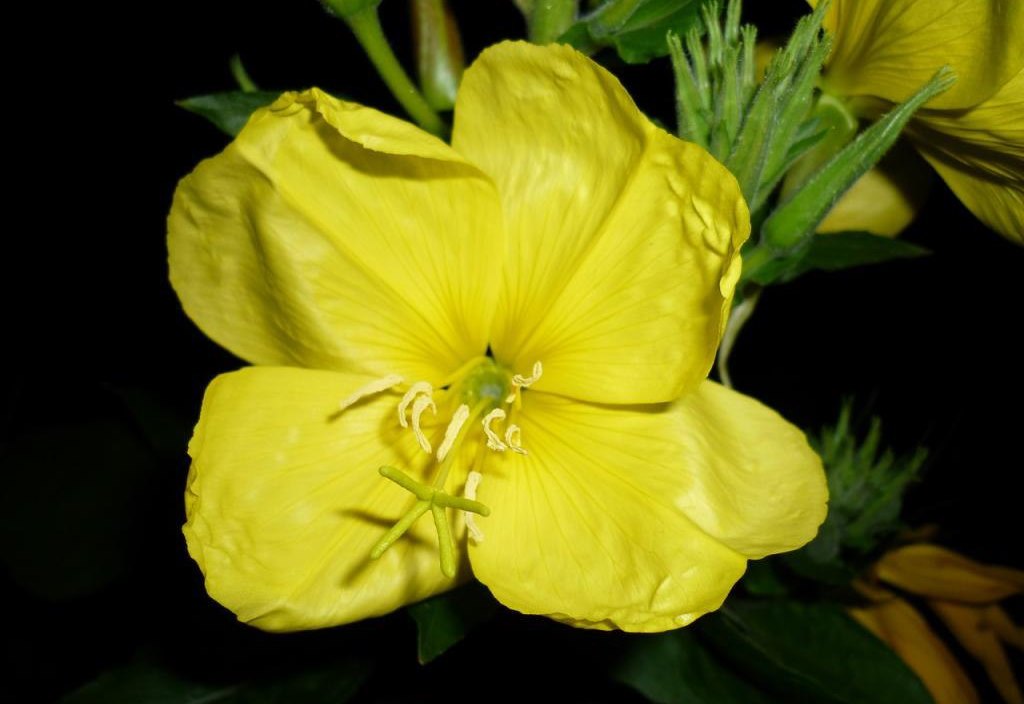Despite the fact that gypsophila has a specific description, gardeners perceive this plant in a slightly different way: for them this flower appears as a snow-white cloud that seems to float in the air. However, this plant provides many varieties that only a specialist can tell about. Most gardeners do not know exactly how to properly grow and care for gypsophila and how best to use it in landscape design.
Content
Perennial gypsophila: varieties and varieties
This plant attracts attention with its attractive appearance and originality, while caring for it is simple, as every novice gardener can be convinced of.
A carpet created by hundreds and thousands of unusual textures with gypsophila flowers, has many advantages:
- forms beautiful thickets, becoming attractive to butterflies;
- is a wonderful decoration for a personal plot and a flower garden;
- brings aesthetic pleasure due to its splendor and incredible lightness.
Therefore, not only gardeners are not indifferent to this plant, but also professional breeders and ordinary owners of country houses and summer cottages. Many gardeners confirm that gypsophila does not give them any particular difficulties. Growing from seed is a difficult method, but even this task is within the power of a layman.
Plant species
At the moment, breeders have managed to withdraw a large number of varieties and varieties perennial gypsophila. This list also includes special plants that seem to be the most convenient and preferable for growing:
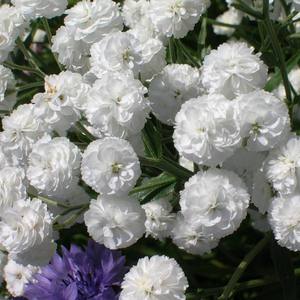 Paniculata gypsophila. Most experienced flower growers are familiar with this plant, because in our country it is grown in various regions. The widespread distribution of gypsophila paniculata was also facilitated by the fact that this variety is represented in the wild in the territory from the Volga region to China. Many lovers of Gypsophila Paniculata flowers like not so much for gray-green leaves, but for inflorescences, which have a delicate white and pinkish tint, which reach 0.8 cm in size.Gypsophila paniculata pleases with flowering throughout the summer, sometimes the flowers remain open until the very September. There are many specimens that differ from each other in height, which can range from 30 cm to 120 cm. Much here depends on the care and type of fertilizers used.
Paniculata gypsophila. Most experienced flower growers are familiar with this plant, because in our country it is grown in various regions. The widespread distribution of gypsophila paniculata was also facilitated by the fact that this variety is represented in the wild in the territory from the Volga region to China. Many lovers of Gypsophila Paniculata flowers like not so much for gray-green leaves, but for inflorescences, which have a delicate white and pinkish tint, which reach 0.8 cm in size.Gypsophila paniculata pleases with flowering throughout the summer, sometimes the flowers remain open until the very September. There are many specimens that differ from each other in height, which can range from 30 cm to 120 cm. Much here depends on the care and type of fertilizers used.- Creeping gypsophila. This variety of small stature is deservedly the most unpretentious. This confirms the fact that he feels good on rocky terrain and in the mountains. It is also quite logical that many well-known breeders later named it “mountain plants”. The decoration of this variety is small white and pinkish flowers, which are complemented by emerald leaves.
- Gypsophila.Against the background of other species, this variety stands out for its extraordinary beauty, which has been endowed with a luxurious texture, which has provided widespread use in landscape design. This gypsophila not only does not create problems in care, but also tolerates severe frosts and long periods of drought. During flowering, miniature white flowers are formed, and adult specimens usually grow up to 10-20 cm.This gypsophila is perfect for decorating rocky surfaces, landscaping lawns and creating landscape edging. Perennial gypsophila also includes a number of other species, among which it is worth highlighting the Pacific, Ural and Arecian.
Planting gypsophila
Although this flower is unpretentious, it must be carefully before planting. find a place for him... The site must have a loose textured soil, drainage is mandatory. It is best to have a sandy soil that absorbs moisture well. The close location of underground water sources is undesirable, as this can lead to decay and death of gypsophila. A rocky surface is a great place to grow plants. The soil on the site should have a normal acidity reaction, and the place itself should be provided with good lighting.
Gardeners need to pay special attention to the fact that, when preparing the gypsophila for planting, it is necessary to loosen the site, and then add a small amount of sand and small pebbles for drainage.
Planting gypsophila always starts with watering... After that, seeds are sown into the soil and sprinkled on top with a thin layer of soil. It is recommended to place seeds no further than 10 cm from each other. After that, a film is stretched over the box with seeds and transferred to a well-lit place where it should stand for several days. Usually, seed germination can be expected after 3 days. After another 20 days, the seedlings form the first leaves. In early May, the seedlings reach a state sufficient for transplanting into open ground.
Gypsophila care
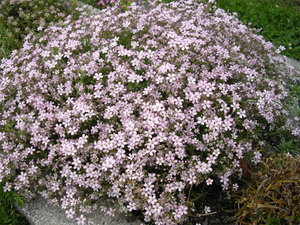 A photo of a plant may make you want to grow it on your site. However, it should be noted that this will not be so easy. The gardener will be able to enjoy the long flowering of gypsophila only if he provides regular watering, loosening the root zone and feeding.
A photo of a plant may make you want to grow it on your site. However, it should be noted that this will not be so easy. The gardener will be able to enjoy the long flowering of gypsophila only if he provides regular watering, loosening the root zone and feeding.
It often becomes especially hot in summer, so on such days the plants must be thoroughly watered and always at the root. Top dressing should be carried out twice a season, using complex mineral fertilizers. When the flowering period has passed, the bushes are pruned, as a result, no more than three to four stems should remain at the root. To protect gypsophila from winter frosts, an effective measure is mulching with peat or leaves.
Fertilizing and feeding
If the gypsophila grown from seeds is provided with a sufficient amount of light and heat, then even additional feeding will not greatly affect its development. If it is not possible to fulfill these two conditions, then humus, mineral fertilizers and organic matter must be applied under the bush, which in no way affect the acidity of the soil.
As an effective fertilizer you can use mullein infusion, which will provide the gypsophila with all the essential trace elements for it. However, you should not use fresh manure, as with its help you will achieve the completely opposite effect. Gypsophila bushes will not only not receive nutrients, but may even wither away.
Plant propagation
To grow gypsophila, you can use the seed sowing method, as well as cuttings. In the latter case, young shoots are used to harvest planting material.
It is recommended to prepare cuttings in late spring. For early rooting, you should use a loose substrate with the addition of a small amount of lime.When planting, the cuttings are buried to a depth of 2 cm, while it is necessary to maintain the temperature at a level of 20 degrees Celsius and good greenhouse effect... When choosing the moment to transplant the cuttings to a permanent place, it is necessary to take into account that they must have enough time for survival before the onset of autumn.
Diseases and pests
 When growing gypsophila in the open field, it must be provided with appropriate care, otherwise there is a danger of rust and gray rot, and in some cases the plant may also suffer from root-knot nematodes. As an effective measure to combat these diseases, it is recommended to carry out spraying plants with phosphamide.
When growing gypsophila in the open field, it must be provided with appropriate care, otherwise there is a danger of rust and gray rot, and in some cases the plant may also suffer from root-knot nematodes. As an effective measure to combat these diseases, it is recommended to carry out spraying plants with phosphamide.
However, in some cases, this method may not bring the desired result. Then you have to dig out a bush and rinse its roots in hot water. You can cope with rust by treating the plant with special fungicides. Quite effective of them are:
- copper sulfate;
- Bordeaux mixture.
Perennial gypsophila: combination with other plants
Perennial gypsophila is of interest not only as an independent ornamental plant, but also as an important element in flower compositions, where it can effectively complement other perennials with large flowers.
Gypsophila can become good neighbor for monads, phloxes, liatris... However, more often than not, experts advise planting it along with roses. This combination of crops helps to brighten the decorative properties of the garden area. In addition to this, such a composition allows you to visually expand it, often with the help of these plants they arrange a beautiful mixborder in the distant parts of the backyard territory.
Gypsophila perennial in landscape design
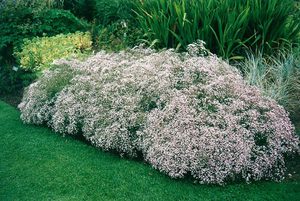 Considering various options for using perennial gypsophila in landscape design, it can be included in an alpine slide or other object that decorates the site. There is a logical explanation for this, because the plant will not only be able to elegantly emphasize the color of other plants, but also persistently endure any whims of nature and will delight others with beautiful flowering throughout the summer season.
Considering various options for using perennial gypsophila in landscape design, it can be included in an alpine slide or other object that decorates the site. There is a logical explanation for this, because the plant will not only be able to elegantly emphasize the color of other plants, but also persistently endure any whims of nature and will delight others with beautiful flowering throughout the summer season.
Gypsophila will help create an incredibly beautiful flower haze that will be appropriate for any garden area, as a result of which its boundaries will be clearly delineated, and the owner will have the opportunity to enjoy an incredible scent.
Conclusion
Do not miss the great opportunity to get acquainted with such a pleasant decorative plant as gypsophila. This perennial was appreciated not only by specialists, but also by many gardeners who like in this plant how unusual it looks on the site. Inspired by such beauty, many do not deny themselves the desire to grow gypsophila on their site. And many succeed in this, because due to its unpretentiousness, the plant takes root on various soils. Although when growing this flower you need take into account a number of rules, otherwise the gardener will not receive the joy he anticipated, waiting for the gypsophila to bloom.
